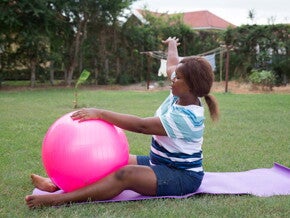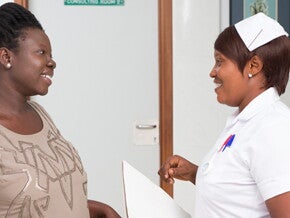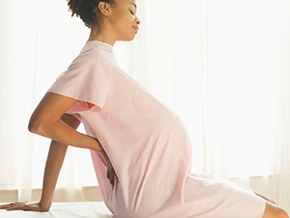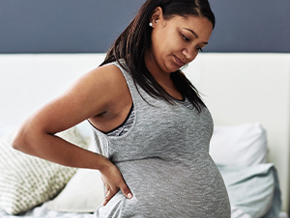
Exercising During Pregnancy : The Basics
Do something that suits your personality
Step one is to choose a fitness program you really enjoy. It's hard to stick with something you don't like doing. So before you commit to a particular style, consider how it will fit your personality and your schedule.
Are you a groupie?
Group exercises are a great way to be active. Try an aerobics class or a pool-exercise class as a part of your workout routine.
Or a solo artist?
If you prefer to work out on your own, try swimming or other exercises that are not too strenuous. They are acceptable exercises during pregnancy, and might be more your style.
Step out and work out
If you like the outdoors, perhaps walking the quiet streets of the neighbourhood or football field are good options .
The ABC’s of a good exercising and workout
Simply walking for 30 minutes, 4 times a week can help support healthy weight gain during pregnancy. Keeping yourself in shape is especially helpful in getting ready for delivery. A good workout can reduce stress and give you an outlet for your frustrations and anxieties. When you're finished with your day's exercise program, you should find yourself feeling calm and peaceful. Here are some points to consider when creating your routine for exercising during pregnancy:
A is for aerobic exercise
Aerobic exercise, also known as cardio, involves large muscle groups and is a great choice for pregnant women. To get a good workout you must put a reasonable amount of stress on your heart and lungs for about 20 minutes. You'll know you're there when you're breathing harder and begin to sweat. Low-impact aerobics, swimming, pool walking, stationary cycling and walking are all good aerobic exercises for pregnant women.
Aim for 30-40 minutes 3-4 times per week. Start low and go slow. If you don’t exercise regularly try for at least 15 minutes 3 times per week and increase your exercise routine by 2 minutes per week until you reach 30 minutes. The best time to progress your exercise routine is during the second trimester since the risks and discomforts of pregnancy are lowest.
We’ve created this chart for you so you can get an idea of what kind of workout you can do based on your pre-pregnancy level of activity.
| Activity Level Before Pregnancy | Active | Inactive |
| Frequency | Week. 0-14 Maintain at 3-4 x week Week 14-29 Increase to 4 x week Week 30-40 Decrease to 3 x week |
Regular daily activities Light exercise 3 x week Decrease to 2-3 x week |
| Intensity | Sweat on brow, but still able to say words during exercise | Able to talk in phrases during exercise |
| Time | 30-60 minutes | 20-30 minutes |
| Type | Avoid high altitude, diving or contact sports. You may continue with your usual activities, such as running and swimming. | Cycling, walking, swimming |
B is for breathing
You should never overexert yourself during exercise while pregnant. One way to test the intensity of your exercise is to use the talk test. The test is simple; just be sure that you can carry on a verbal conversation when exercising. If you can’t, slow down.
C is for cool-down (and don’t forget the warm-up)
Save time for a warm-up and cool-down. This will help to prepare your body for exercise and decrease the likelihood that you will injure yourself while exercising. Low intensity calisthenics, stretching and relaxation exercises should be included. Aim to do 5-10 minutes of warm-up and cool-down before and after each exercise routine. Including prenatal stretches as part of your workout routine can give you additional flexibility and strength.
Drink plenty of water
Another important part of your workout is keeping hydrated. There's always a danger of dehydration during exercise. A good guideline is to drink 2 glasses of water about an hour before you exercise, then a glass halfway through your workout and another glass when you're done.
Clothing can make a difference
Choose an exercise outfit that will deliver until you do. You want clothing that will keep you and your baby from getting too hot while you work out. You can put together a great outfit by pairing cotton trousers or shorts with an oversize t-shirt. Cotton is ideal because it draws moisture off your skin, and the loose shirt will allow good air circulation.














